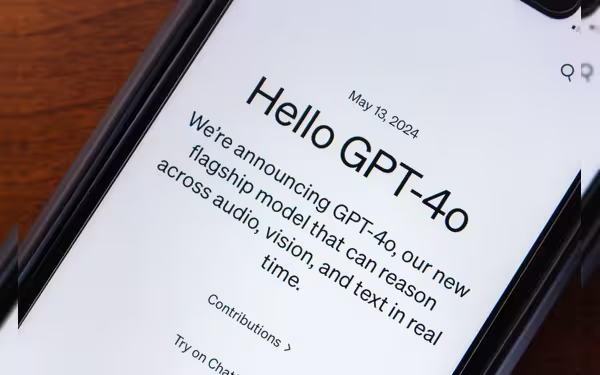Thursday, November 21, 2024 06:23 AM
ChatGPT Introduces Live Camera Feature in Advanced Voice Mode
- ChatGPT may soon feature a Live Camera capability.
- Users can interact with AI through real-time visual processing.
- OpenAI emphasizes responsible use of AI technology.
 Image Credits: mashable_me
Image Credits: mashable_meChatGPT is set to introduce a Live Camera feature, enhancing user interaction through real-time visual processing in its Advanced Voice Mode.
In recent developments, ChatGPT, the popular AI language model developed by OpenAI, is on the verge of introducing exciting new features that could significantly enhance user experience. Among these anticipated features is a 'Live Camera' capability, which has been hinted at through code discovered in the latest beta version of ChatGPT. This advancement is part of the Advanced Voice Mode, which has already been rolled out to ChatGPT Plus and Team users.
The discovery was made by tech enthusiasts at Android Authority, who found lines of code that suggest the integration of a 'Live Camera' feature. This feature is designed to allow ChatGPT to visually process information in real-time. However, the code also includes a cautionary note, advising users not to rely on the 'Live Camera' for live navigation or decisions that could affect their health or safety. This warning underscores the importance of using AI responsibly, especially when it comes to critical situations.
Further details in the code indicate that users will be able to tap a camera icon, enabling ChatGPT to view and discuss their surroundings. This capability was first showcased during an OpenAI event last May, where the new GPT-4o model demonstrated its ability to identify objects and remember details about them. For instance, during a demo, GPT-4o recognized a dog playing with a tennis ball and recalled its name, 'Bowser.' Such features could revolutionize how users interact with AI, making it more intuitive and engaging.
Since the initial unveiling of GPT-4o, there has been little information regarding its vision capabilities. However, the recent rollout of Advanced Voice Mode indicates that OpenAI is committed to enhancing its offerings. If the 'Live Camera' feature is indeed on the horizon, users will soon have the opportunity to explore both voice and vision functionalities, which were teased last spring.
OpenAI has been actively innovating, despite facing challenges with future models. Just last month, the company introduced ChatGPT Search, a feature that connects the AI model to the internet, allowing it to provide real-time information. Additionally, there are rumors of a new agent that could perform multi-step tasks on behalf of users, such as writing code and browsing the web, with a potential release date in January.
The potential introduction of the 'Live Camera' feature in ChatGPT represents a significant leap forward in AI technology. As users await these developments, it is crucial to approach such advancements with a sense of responsibility and awareness. The integration of visual processing capabilities could not only enhance user interaction but also pave the way for more sophisticated applications of AI in everyday life. As we move forward, it will be interesting to see how these features evolve and what new possibilities they will unlock for users around the world.













